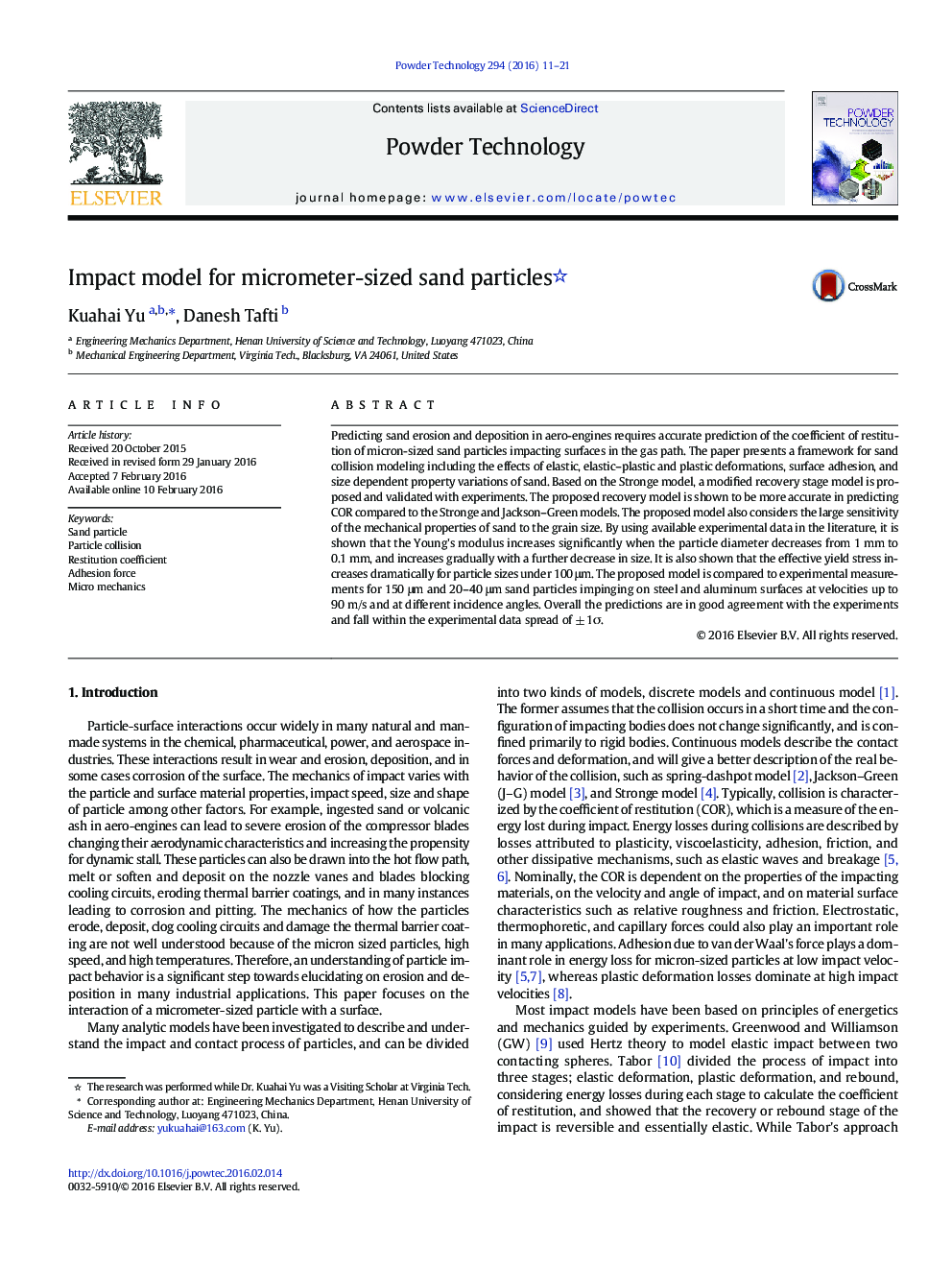| Article ID | Journal | Published Year | Pages | File Type |
|---|---|---|---|---|
| 235042 | Powder Technology | 2016 | 11 Pages |
•The Stronge collision model with a reformulated recovery stage is proposed and validated.•Property variations of micrometer sized sand particles are derived from the literature.•Predicted COR shows good agreement with some experiments for micrometer sized sand particles.
Predicting sand erosion and deposition in aero-engines requires accurate prediction of the coefficient of restitution of micron-sized sand particles impacting surfaces in the gas path. The paper presents a framework for sand collision modeling including the effects of elastic, elastic–plastic and plastic deformations, surface adhesion, and size dependent property variations of sand. Based on the Stronge model, a modified recovery stage model is proposed and validated with experiments. The proposed recovery model is shown to be more accurate in predicting COR compared to the Stronge and Jackson–Green models. The proposed model also considers the large sensitivity of the mechanical properties of sand to the grain size. By using available experimental data in the literature, it is shown that the Young's modulus increases significantly when the particle diameter decreases from 1 mm to 0.1 mm, and increases gradually with a further decrease in size. It is also shown that the effective yield stress increases dramatically for particle sizes under 100 μm. The proposed model is compared to experimental measurements for 150 μm and 20–40 μm sand particles impinging on steel and aluminum surfaces at velocities up to 90 m/s and at different incidence angles. Overall the predictions are in good agreement with the experiments and fall within the experimental data spread of ± 1σ.
Graphical abstractFigure optionsDownload full-size imageDownload as PowerPoint slide
